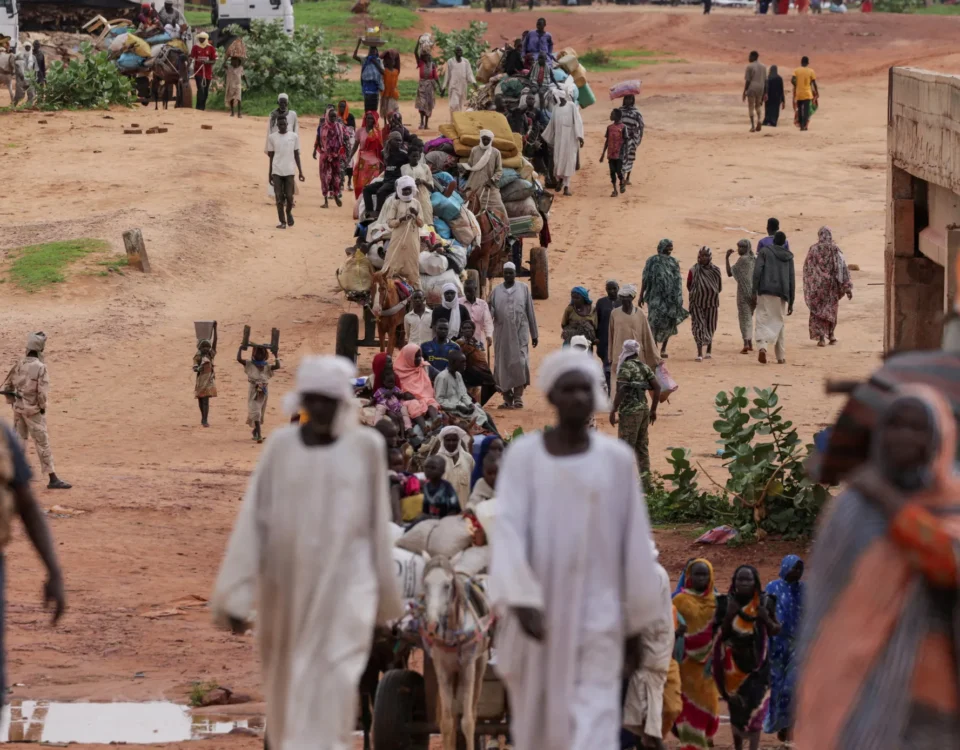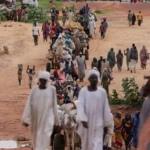
Sudan’s displacement crisis: The realpolitik of double standards in humanitarian international relations
October 20, 2025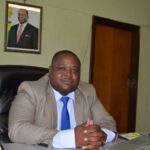
City of Mutare goes door to door for 2026 Budget consultation input
October 31, 2025DRC’s silent crisis: The world must stop turning a blind eye
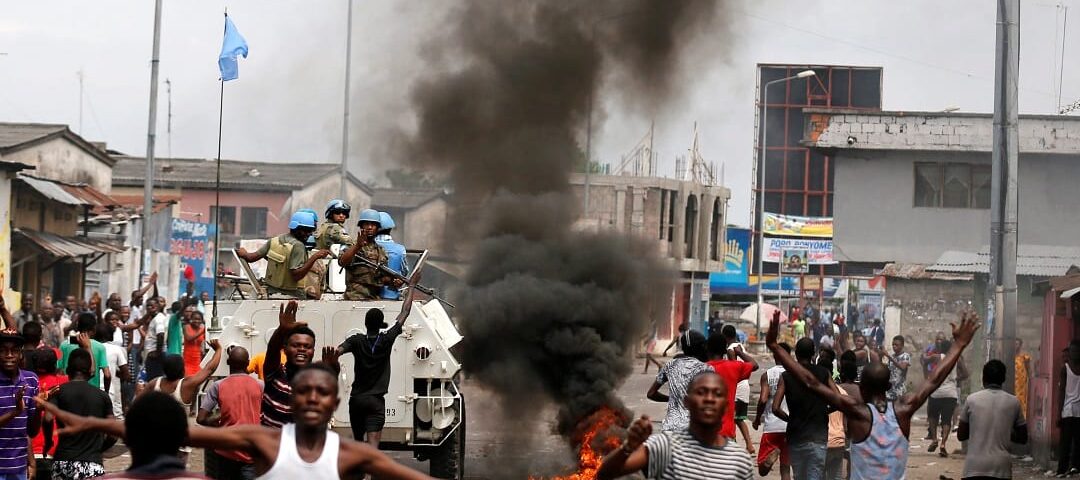
FLASHBACK: Residents chanting slogans against the former Congolese President Joseph Kabila in 2016 as peacekeepers serving in the United Nations Organization Stabilization Mission in the DRC (MONUSCO) patrolled during demonstrations in the streets of the capital Kinshasa. REUTERS/Thomas Mukoya.
“Congo’s cries must be heard. Its tears must be seen. Silence is no longer an option.”
By Angela Mabo and Ishratu Mansaray
IN the heart of Africa, a silent tragedy is unfolding where the world is watching in silence. While global headlines focus relentlessly on conflicts in Ukraine and Palestine, the Democratic Republic of Congo (DRC) is facing one of the most severe and under-reported humanitarian crises of our time.
Nearly 7.7 million Congolese people have been forced from their homes, a figure larger than the populations of many African nations, yet their suffering rarely makes front-page news or dominates international debate. The roots of this crisis run deep. Decades of conflict, beginning in the wake of the 1994 Rwandan genocide and intensifying through the late 1990s and 2000s, turned eastern Congo into a battleground for dozens of armed groups competing for power, territory and access to treasured natural resources.
Foreign interventions, internal political struggles and regional power dynamics all contributed to a prolonged state of instability. Over time, communities in North Kivu, Ituri and other eastern provinces have endured waves of violence, mass displacement and systematic neglect.
The consequences for ordinary people are devastating. Families in overcrowded camps live without adequate shelter, food or clean water as the war escalates.
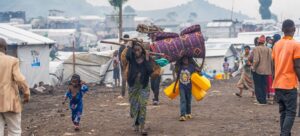
© WFP/Michael Castofas: Displaced families in the Bulengo camp on the outskirts of Goma in June this year faced a dire and uncertain future as M23 authorities instructed them to dismantle their makeshift shelters.
Temporary camps have turned into semi-permanent settlements, where generations grow up in limbo, their dignity eroded day by day. With each passing year, the dream of returning home grows fainter. The 2025 Goma offensive was a military operation launched by the March 23 Movement (M23), a Congolese rebel group that is part of the Congo River Alliance ( AFC ) and is supported by Rwanda, against the regional capital of Goma in the DRC. Since the beginning of the this year, the Rwanda-backed M23 fighters have swept across eastern DRC, taking key cities including Goma and Bukavu. The violence has displaced more than one million people in Ituri, North Kivu and South Kivu provinces.
The lack of global attention is stark when compared to other crises. Appeals for the Ukraine war and Gaza strip war dominate headlines and social media, and appear to be more of a priority for donors. However, In Congo, the humanitarian crisis receives little visibility on major social media platforms like TikTok, Instagram and Twitter. Unlike what is seen in the ‘Free Gaza’ campaigns trending globally, rarely does the ‘Free Congo’ campaign receive the same attention. This silence is not accidental, it reflects ‘sinister’ political choices and economic interests by the political actors.
Why is the world silent?
Is it fatigue from the multiple global crises, or is there something more uncomfortable at play where the world seems to be spectating or maybe someone or some nations are benefiting from DRC’s suffering? DRC is often called “the heart of Africa”, not just for its geography but also for its extraordinary natural wealth. The country possesses some of the world’s richest reserves of gold, diamonds, coltan and cobalt minerals, essential to modern technology. Cobalt powers electric cars and smartphones whilst Coltan is critical for electronics. While these resources flow out of the DRC, with some reportedly unaccounted for, sadly, wealth rarely flows back in and the economy fails to grow.
Neighboring countries such as Uganda and Rwanda have reported booming gold exports despite limited domestic production. For example, Uganda’s gold exports rose from US$443,000 in 2014 to US$1.2 billion in 2019, just five years later, raising serious questions about the origin of that gold. Rwanda, which produces only a small quantity of gold annually, has also become a major exporter.
Meanwhile, Congolese communities living near mines often see no benefit. Instead, they bear the brunt of exploitation and conflict. Mining sites are frequently controlled by armed groups or corrupt networks that use profits to fund further violence. The same minerals that fuel global industries are also fueling displacement, making DRC’s crisis not just humanitarian, but also economic and political.
This is why the DRC’s displacement crisis cannot be understood in isolation. It is tied to global supply chains, regional power struggles and international indifference. Economic analysts often argue that funding must be “stretched” between crises in Ukraine, Gaza, Sudan and elsewhere. This framing however ignores the reality that the DRC crisis has been ongoing for decades now, and its impact is global. Every smartphone, laptop, or electric car potentially carries a piece of the DRC’s suffering.
What should be done?
Firstly, the Congolese government must take the lead in addressing the root causes. This means tackling corruption head on, strengthening local security forces and promoting reconciliation between communities. Without good governance, humanitarian aid alone cannot bring lasting peace.
Secondly, regional and international actors must stop turning a blind eye. Protecting civilians should be a central priority. International responses should support Congolese-led peace building efforts, rather than relying solely on short-term crisis management. This requires sustained funding, diplomatic engagement and accountability from those who profit from illicit mineral trade.
Thirdly, the international community including media, donors and investors must recognize the link between resource exploitation and displacement. Greater transparency in supply chains, stricter regulations on mineral extraction and pressure on companies to adopt ethical and sustainable practices, are all necessary measures needed to help break the cycle of violence and exploitation in the DRC.
For too long, Congo’s tragedy has been overshadowed by other conflicts. But Congolese lives matter just as much as any others. The world’s silence is not neutrality, it is complicity. The minerals that power modern life are extracted from the same ground where millions of Congolese people are displaced with no compensation, left hungry and ignored.
It’s high time that the global community amplifies the DRCs voice, fully funds humanitarian appeals, holds exploiters accountable, and supports long-term peace building. The DRC’s crisis is not just a local problem it is a global responsibility.
Congo’s cries must be heard. Its tears must be seen. Silence is no longer an option.
Angela Mabo and Ishratu Mansaray are Department of International Relations and Diplomacy students from Africa University. They write in their personal capacity.
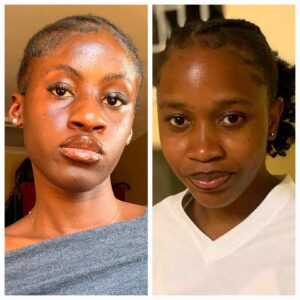
L-R: Ishratu Mansaray and Angela Mabo


